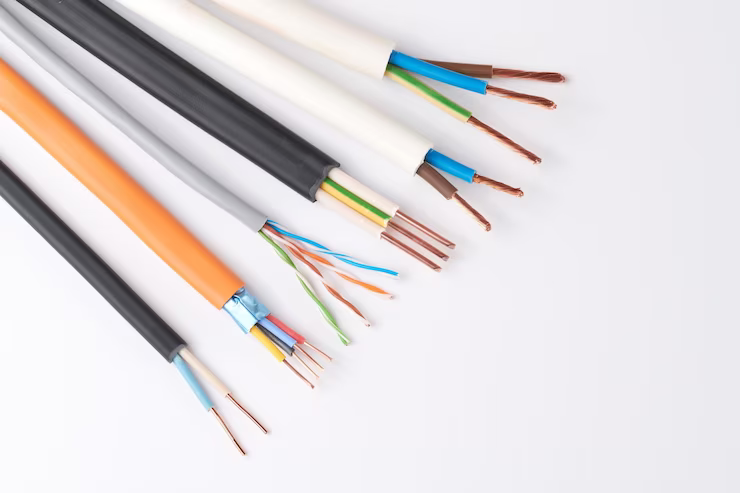
Non-Metallic Sheathed Cable (NM Cable): The non-metallic sheathed cable, also known as NM cable, is one of the most commonly used electrical cables in residential housing. This cable consists of two or more insulated conductors enclosed in a non-metallic sheath. NM cable is easy to handle and install, making it ideal for indoor wiring where there is minimal exposure to severe environmental conditions. It is commonly used for lighting and power circuits in home construction.
Armoured Cable (BX Cable): Armoured cable, or BX cable, also known as metallic sheathed cable, includes conductors that are protected by a metal sheath, providing additional durability and protection against physical damage. This type of cable is used in environments where cables might be exposed to mechanical harm, such as in industrial buildings or areas where cables run exposed rather than behind walls. The metal sheathing also acts as a ground, eliminating the need for a separate ground wire within the cable.
Underground Feeder Cable (UF Cable): UF cable is quite similar to NM cable but is designed to be used in wet locations and directly buried underground without the need for additional piping. This cable has a special plastic sheathing that resists moisture, making it perfect for supplying power to outdoor lighting systems, garden pumps, and other exterior installations.
Coaxial Cable: Coaxial cable is widely used for transmitting television signals and internet connections. It consists of a central conductor surrounded by a layer of insulation, over which a second conducting layer and an outer plastic sheath are placed. The unique construction of coaxial cables helps prevent signal interference, making them ideal for telecommunications and high-speed data transfer.
Fibre Optic Cable: Fibre optic cables use strands of glass or plastic fibres to transmit data in the form of light. This type of cable is known for its high speed and bandwidth capabilities, substantially higher than that of copper cables. Fibre optic cables are predominantly used in telecommunications, high-speed internet services, and applications requiring high data transfer rates over long distances without degradation.
Twisted Pair Cable: Used primarily in networking, twisted pair cables consist of pairs of insulated copper wires twisted together. This design helps minimize electromagnetic interference and crosstalk between pairs, which can degrade data transmission quality. There are two types of twisted pair cables: shielded (STP) and unshielded (UTP), with shielded varieties providing additional protection against interference.
High-Temperature Cable: Designed to withstand extreme heat, high-temperature cables are used in industrial applications such as furnaces, boilers, and other high-heat environments. These cables are made from materials that can maintain integrity and performance in extreme temperatures, ensuring continuous operation under challenging conditions.
Conclusion
Choosing the right type of cable is essential for any electrical installation. Each cable type is designed to meet specific environmental and operational demands, providing safe, efficient, and effective performance across a range of applications. By understanding the different types of electrical cables and their uses, professionals can ensure they select the best product for their specific needs, leading to safer and more reliable electrical systems.

 Admin
Admin
Leave A Reply
Your email address will not be published. Required fields are marked *